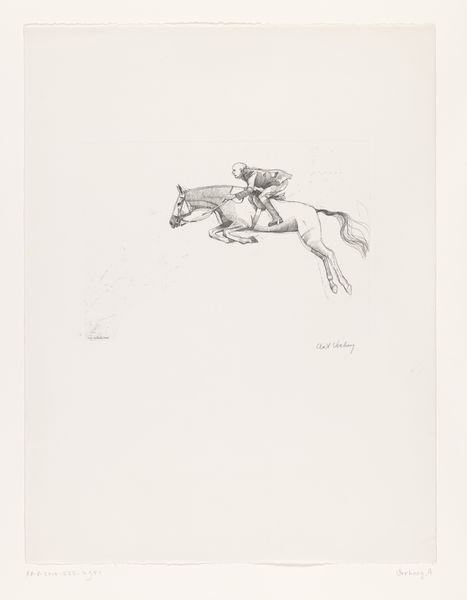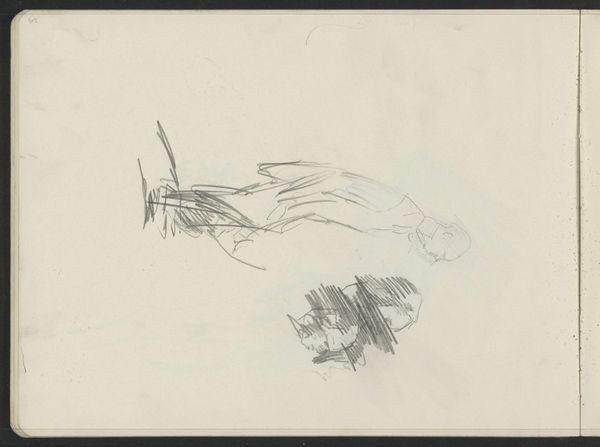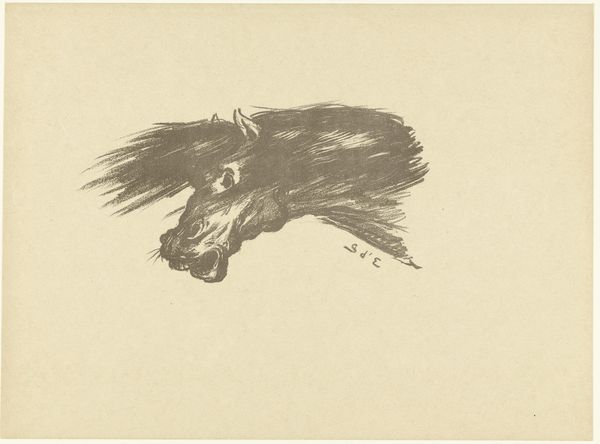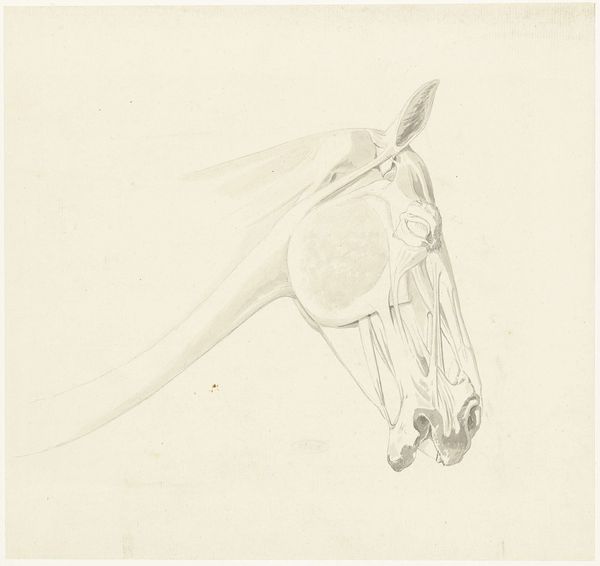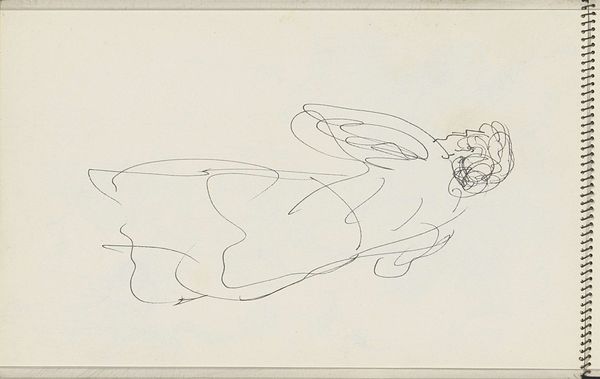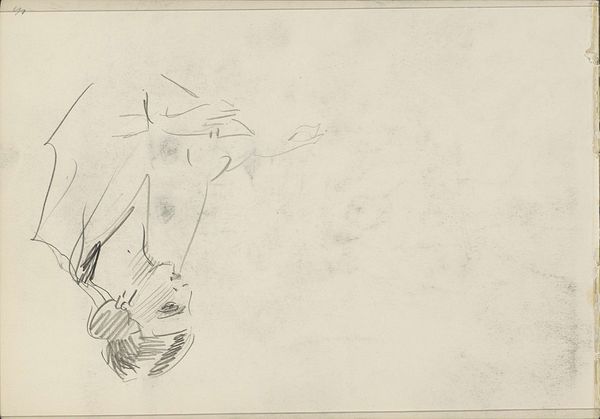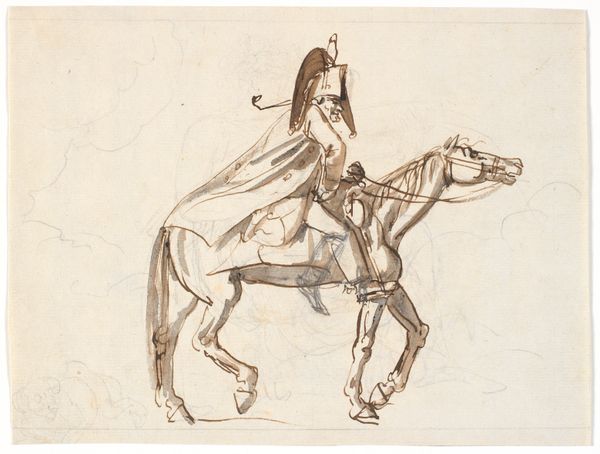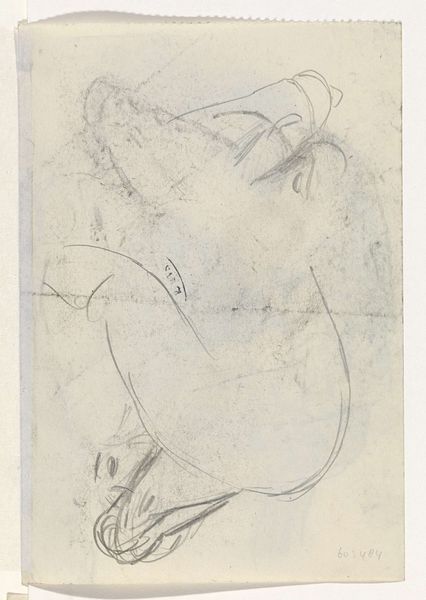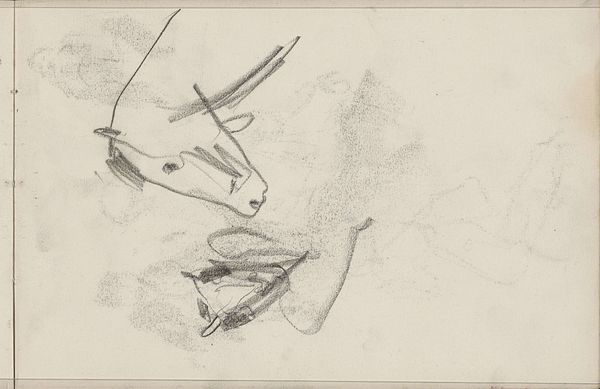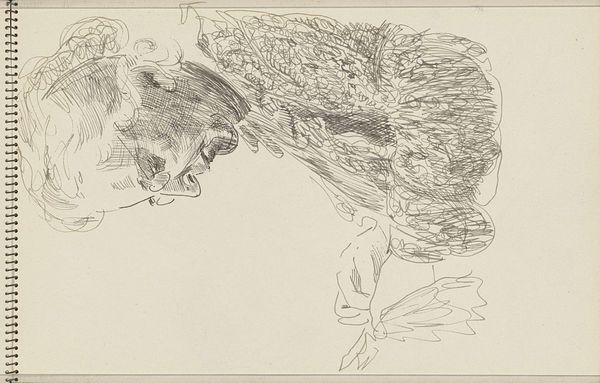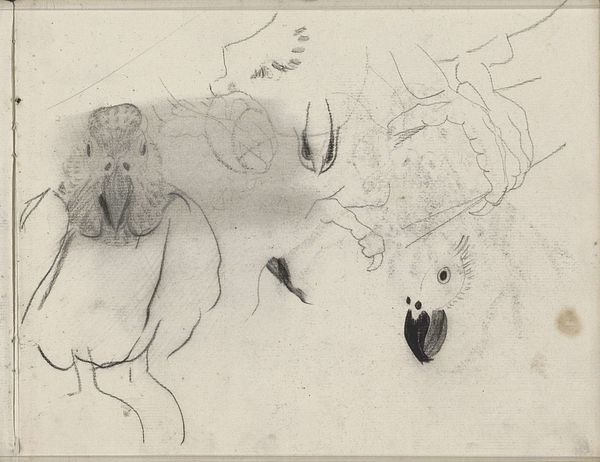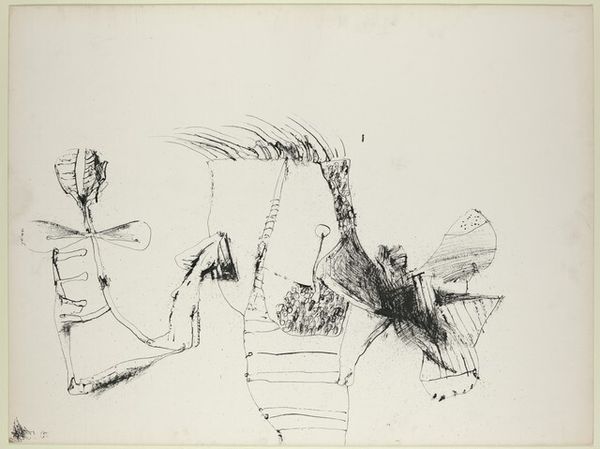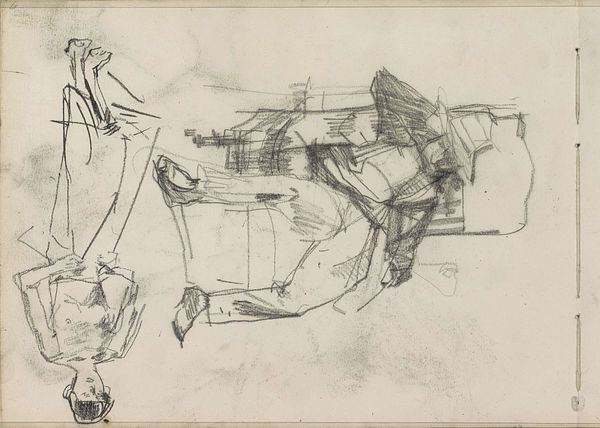
drawing, pencil
#
drawing
#
pencil sketch
#
landscape
#
figuration
#
geometric
#
pencil
#
line
Dimensions: height 299 mm, width 410 mm
Copyright: Rijks Museum: Open Domain
Editor: This is "Lachende galopperende" (Laughing Galloper), a pencil drawing by Henk Henriët, created sometime between 1930 and 1945. I'm struck by how dynamic the lines are; they really convey a sense of motion. What formal qualities stand out to you in this work? Curator: The use of line is indeed paramount. Notice how Henriët employs a flurry of short, repetitive strokes to build up the forms of the horse and rider, while simultaneously suggesting their rapid movement across space. Observe the almost geometric rendering of the horse’s body, contrasted with the more loosely defined rider. How does this tension between geometric and organic forms affect your interpretation? Editor: I guess it makes the horse seem more like a stylized depiction of speed, while the rider feels almost incidental. The lines representing wind also give movement, they seem to start from nothing but the trace is clear, creating this sense of dynamism. Curator: Precisely. It’s about the formal interplay of these elements to create the illusion of speed and capture a fleeting moment. Consider the negative space surrounding the figures; it’s not merely empty but active, contributing to the overall composition. The lines create this sort of bubble, trapping the characters inside movement. The light, pale colors force one to notice that they are in movement, a blurry gallop. What emotions does the overall composition evoke? Editor: Definitely a feeling of lightheartedness and energy! This was done between 1930 and 1945. So it brings up questions about escaping the moment through art. I'd never considered how much information could be conveyed simply through line quality. Curator: Absolutely. Formal analysis allows us to understand how Henriët transcends mere representation and instead constructs a powerful visual experience rooted in the formal properties of line, shape, and space. It showcases how the aesthetic function can evoke something more when understood from a place of abstraction.
Comments
No comments
Be the first to comment and join the conversation on the ultimate creative platform.
